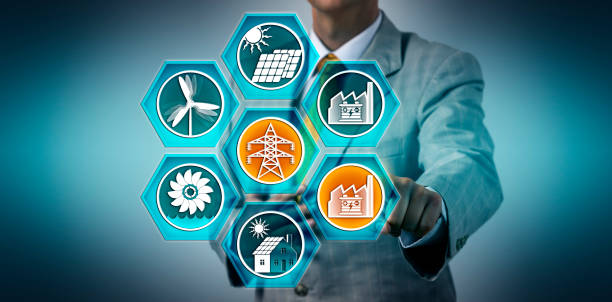Paring back unnecessary power conversions and increasing lighting efficiency are effective energy-saving strategies for data centers. We research technologies and improvements throughout the electric power chain to improve overall facility energy efficiency.
Power
Overview
Typical power chain conversions waste energy. Power flows into most data centers at a high voltage, is converted from AC to DC, and then back to AC in Uninterruptible Power Supplies (UPSs). Voltage is then dropped in Power Distribution Units (PDUs) and converted from AC back to DC in individual server power supplies. This process is extremely inefficient as each transition results in energy losses and heat, which in turn must be removed by the cooling system.
High-Level Best Practices
Although power supply efficiency has been improving, power supplies vary greatly in performance. Purchasing efficient power supplies, such as those rated by ENERGY STAR or Climate Savers, is an important energy-saving strategy. UPSs, front-end AC-DC power supplies, and DC-DC converters are three important conversion processes for powering of servers and other IT loads in a data center. Improving the efficiency of these processes can significantly improve the overall energy efficiency of a data center. Storage is a parallel area of importance. Key best practices include:
- Examining power redundancy requirements

- Increasing the load factor on UPS units by taking some offline
- Load equipment for the best power-to-performance ratio
- Optimizing use of block heaters for standby generators
- Installing premium-efficiency motors
- Using modular UPSs
- Increasing high voltage distribution and reducing conversions
- Shifting to Direct Current (DC) powering
- Moving to renewable sources for primary power
Lighting
Overview
While lighting represents a small percentage of the total energy use in data centers, it nonetheless presents an important energy efficiency opportunity. Lighting energy use is still significant, however, and lighting efficiency is both well understood and easy to achieve. Lighting controls, efficient lamps and localized task lighting are all widely deployedcommercial buildings and can easily result in savings for the data center. Reducing lighting loads also reduces cooling loads.
High-Level Best Practices
Key best practices include:
- Installing energy-efficient lamps and ballasts
- Installing occupancy sensors
- Installing effective lighting controls
Featured Resources
Data Center Electrical Power Chain Assessment Tool
This spreadsheet-based tool is designed to assess the potential savings from efficiency actions in the electrical power chain and lighting of a data center. Users input basic configuration and performance information on transformers, generators, uninterruptible power supplies (UPS), power distribution unit (PDU) devices and lighting. The tool provides recommendations for energy-efficiency gains, including estimated energy savings and payback periods. Access the Electrical Power Chain Tool.
Data Center Master List of Efficiency Actions
This comprehensive list of recommended efficiency actions for data centers provides more information on the high-level best practices outlined above as well as a more detailed list of best practices related to cooling air and air management. Access the Master List.
Data Center Metering and Resource Guide
This resource presents guidance on measuring power usage effectiveness (PUE). PUE is the ratio of total energy use to that of energy used by information technology (IT) equipment. The metric provides insight into how much energy is used for power delivery components, cooling equipment and lighting compared to IT. Access the guide.
DC Power for Data Centers
We outline the benefits of using a Direct Current (DC) power distribution scheme throughout a data center instead of conventional Alternating Current (AC) power. Go to the webpage.
Energy Efficiency Toolkit Series: Electric Power Supply
This webinar provided an overview of electric power supply components in data centers; identification of typical energy savings opportunities among those components; and an introduction and demonstration of Berkeley Lab's revamped and updated Electric Power Chain Tool, which allows detailed characterization of the power chain for a data center and recommended/tailored actions to achieve energy savings. Access the webinar.
Federal Energy Management Program (FEMP) Guidance
FEMP provides federal agencies with guidance on calculating cost-effectiveness, claiming an exception to purchasing requirements, incorporating Federal Acquisition Regulation language in contracts, finding federal supply sources, and tips to user products more efficiently. Go to the webpage.
Data centers can consume up to 50 times as much energy per square foot as a typical office building. Researchers at Berkeley Lab, along with private industry, ECOS Consulting and the Electric Power Research Institute, collaborated on an California Energy Commission demonstration project that shows the energy savings potential of running data centers on DC power rather than AC.
